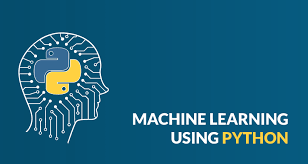
Data Science with Python
Machine Learning with Python: Machine learning is the kind of programming which gives computers the capability to automatically learn from data without being explicitly programmed. This means in other words that these programs change their behaviour by learning from data
Get ready to dive into the world of Machine Learning (ML) by using Python! This course is for you whether you want to advance your Data Science career or get started in Machine Learning and deep lea
Complete Practical & Real-time Training
- Complete Practical and Real-time Scenarios
- Study Material and Practice Labs as required
- Session wise notes & Doubts Clarifications
- Mock Interview
Intro to R Programming
- Introduction to R
- Loading, Querying and manipulating data in R
- Cleaning raw data for Modeling
R Programming Concepts
- The datatypes in R and its uses
- Built-in functions in R
- Subsetting methods
- Summarize data using functions
- Use of functions like head(), tail(), for inspecting data
- Use-cases for problem solving using R
Data Manipulation in R
- Various phases of Data Cleaning
- Functions used in Inspection
- Data Cleaning Techniques
- Uses of functions involved
- Use-cases for Data Cleaning using R
Data Import Techniques in R
- Import data from spreadsheets and text files into R
- Importing data from statistical formats
- Packages installation for database import
- Connecting to RDBMS from R using ODBC and basic SQL queries in R
- Web Scraping
- Other concepts on Data Import Techniques
Exploratory Data Analysis (EDA) using R
- What is EDA& Why we need it.
- Goals & Types of EDA
- Implementing of EDA
- Boxplots, cor() in R
- EDA functions
- Multiple packages in R for data analysis
- Extending R with user-defined packages.
Data Visualization in R
- Story telling with Data
- Principle tenets
- Elements of Data Visualization
- Infographics vs Data Visualization
- Investigating characteristics of data set through Visualization.
- Identifying outlier in data.
Machine Learning Understanding
- ML Fundamentals& Use Cases.
- Understanding Supervised and Unsupervised Learning Techniques
- Clustering& Common Metrics
- Distance Measure Types: Euclidean, Cosine Measures
- Creating predictive models&Understanding K-Means Clustering
- Understanding TF-IDF, Cosine Similarity and their application to Vector Space Model
- Case study
- Implementing Association rule mining
- Understanding Process flow of Supervised Learning Techniques
- Decision Tree Classifier
- How to build Decision trees
- Random Forest Classifier
- What is Random Forests
- Features of Random Forest&Out of Box Error Estimate and Variable Importance
- Naive Bayes Classifier.
- Problem Statement and Analysis
- Various approaches to solve a Data Science Problem
- Pros and Cons of different approaches and algorithms.
- Linear Regression& Implementation
- Logistic Regression& Implementation
- Text Mining&Sentimental Analysis.
PYTHON PROGRAMMING
- Python Overview& Languages
- Advantages/Disadvantages of Python pydoc.
- Starting Python& Path Configuration
- Running a Python Script& Debugging.
- Python Scripts on UNIX/Windows
- Anaconda Python Editors and IDEs.
- Using Variables& Keywords
- Built-in Functions& Different String Literals with Usage.
- Math Operators and Expressions
- Writing to the Screen& String Formatting.
- Command Line Parameters and Flow Control.
Sequences and File Operations
- Lists ,Tuples
- Indexing and Slicing
- Funtions,Iterating through a Sequence
- Using Enumerate
- Operators and Keywords for Sequences
- The xrangefunction& List Comprehensions
- List Comprehensions&Generator Expressions
- Dictionaries and Sets.
Quick Revise – Functions Sorting Errors and Exception Handling
- Function Parameters
- Global Variables
- Variable Scope and Returning Values. Sorting
- Alternate Keys& Lambda Functions.
- Sorting Collections of Collections
- Sorting Dictionaries, Lists in Place
- Errors and Exception Handling
- Handling Multiple Exceptions
- The Standard Exception Hierarchy
- Using Modules
- The Import Statement
- Module Search Path
- Package Installation Ways.
RE Packages and Object Oriented Programming in Python
- The Sys Module&Interpreter Information
- STDIO&Launching External Programs
- PathsDirectories and Filenames
- Math Function,Random Numbers
- Zipped Archives
- Defining Classes,Initializers
- Instance Methods, Properties
- Class Methods and DataStatic Methods
- Private Methods and Inheritance
- Module Aliases and Regular Expressions.
Real time Overview & Layout skeleton
- Dealing with Errors&Using Unit Tests
- Project Layout and Overview
- Required Packages& Creating Skeleton
- Final Directory Structure
- Testing your Setup
- Creating a Database with SQLite 3
- CRUD Operations
ML Using Python Language
- Areas of Implementation of Machine Learning
- Why Python&Major Classes of Learning Algorithms
- Supervised vs Unsupervised Learning
- Learning NumPy&Scipy
- Basic plotting using Matplotlib
- Machine Learning application
Algorithm
- General Approach to kNN
- Building the Classifier from Scratch
- Testing the Classifier
- Measuring the Performance of the Classifier.
- Clustering Problem
- What is K-Means Clustering
- Clustering with k-Means in Python.
Application Implementation
- Introduction to Pandas& Creating Data Frames
- Grouping Sorting &Plotting Data
- Creating Functions
- Converting Different Formats
- Combining Data from Various Formats
Enroll For Course Now